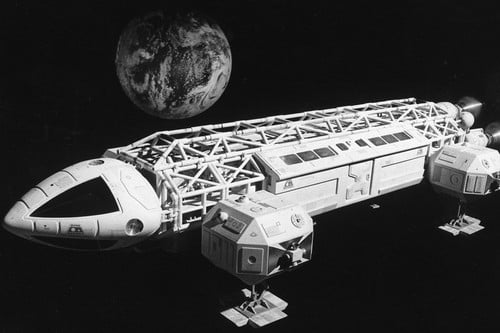

Since you’re hardly ever in darkness, you can power down almost everything for the one week a year of darkness, and rely on a methalox APU for peaking during the power down.īatteries have specific energy of about 250 Wh/kg If you site at a PONQUEL, the worst-case light/dark is 75/25, and the average case is about 99/1.

Yes, if you have a 50/50 light/dark cycle and you need as much power in the dark as you do during the day, then a gang of 10 kWe Kilopowers does substantially better than solar and batteries. Update: Missed your storage reference up above. At least Kilopower has gone through the KRUSTY testing, albeit at only 1 kWe scale. Which of those would you rather transport to the lunar surface, at a specific cost of somewhere between $1500-$3000/kg?Īs for Megapower, it barely exists on the drawing board. The 10 kWe version of Kilopower is expected to have a mass of 1500 kg, so specific power is 6.7 W/kg. Space-grade triple-junction solar panels have a specific power that’s now close 200 W/kg. Thus, by putting the heat generating surface on rocks, you effectively cut heat dissipation in half (since it’s effectively zero heat dissipation through the rocks). Any size of flat surface facing empty space can dump heat to space at the same rate per surface area. Of course, if the rocks start cold, then you can dump heat into them until they equilibriate, but this is a temporary situation. Which means a super thick insulating layer, and thus near-perfect insulation. If you have a heat generating surface placed on a larger solid, the effective thickness of the insulating later provided by the solid is something comparable to the radius of the heat generating surface – which in a lunar solar installation would likely be very large. And the insulation provided by an insulating layer depends on its thickness. (I’m not sure exactly how you are interpreting it).Īlso, on the original question, you were wrong and Dan Lantz’s criticism of your view is correct, though it depends on the scale. Obviously he could not possibly have meant that stuff in vacuum instantly equilibriates to the surrounding temperature or however you are interpreting it. If the launches and the materials were about $500 million per lunar Starship mission, then it would be about $10 billion for a major lunar base.Įven if he said what you said he said, that just means he was writing loosely. Twenty-SpaceX Starships to the moon would need several launches to orbit to refuel them. The base would support a few thousand people and would enable the seed for major lunar factories and lunar mining. If construction of the moon-based started in 2023, then it could be completed and scaled to a gigawatt base by about 2026. There could another five Starship landings to provide batteries. This would be ten refueled Starship landings for the main solar power systems and another five for construction machinery and other systems. This would mean transporting 1000 tons of material for a gigawatt of solar power on the moon. The weight efficiency is being improved and simple lunar materials could be used to make some of the structures. In 2015, space-based solar power was 6.7 kilograms per kilowatt. The system could weight 1 kilogram per kilowatt.


 0 kommentar(er)
0 kommentar(er)
